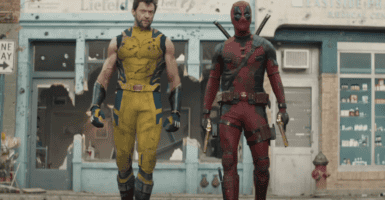2001: A Space Odyssey Was Supposed To Have A Very Different Opening

Stanley Kubrick’s mind-bending 1968 film 2001: A Space Odyssey is the kind of movie where you can examine practically every single frame and endlessly debate each element.
People have been doing it since day one. It already clocks in at well over two hours (damn near three), but if the notoriously meticulous filmmaker had followed his original plan, it could very well have been even longer.
Back in 2014, 2001: A Space Odyssey was showing in the U.K., and some details about the initial prologue have surfaced and are making the rounds.
The Guardian published an article exploring the intro that fans never got the chance to see included in the movie as part of the British Film Institute’s “Days of Fear and Wonder.”
Unfortunately, this 2001: A Space Odyssey footage doesn’t exist anymore, lost to the ravages of time, but it apparently featured a bunch of scientists sitting around and talking about “aliens, evolution, and space travel,” among other topics.
This is because Kubrick wanted 2001: A Space Odyssey to be grounded in scientific fact, beholden to the rules that govern the physical universe, instead of being full of fantastic, impossible craziness.
Astronomer Bernard Lovell, the man behind the Jordell Bank Observatory, home of Britain’s most powerful telescopes, served as an advisor on 2001, and the introduction featured him and 20 other scientists sharing ideas in what sounds very much like a roundtable kind of scenario. They were even supposing that many habitable planets may be waiting out there in the galaxy.
Though the 2001: A Space Odyssey footage is lost, there is still a transcript in existence, and there’s all kinds of stuff covered. They talk about the search for extraterrestrial life, radio astronomy, and much, much more (you can buy a copy for yourself on Amazon).
While this would have been an interesting addition to 2001, there’s no doubt that it would have drastically altered the structure, pace, flow, and shape of the film. Given how careful and thorough he was, you can bet he had a plan, but you can rest assured that he also had a very good reason for the cuts he made, he always did.












